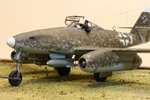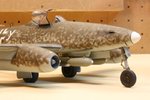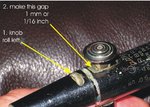copcheck
Airman 1st Class
I recently upgraded my brush and bought this kit (all the wife would let me get away with).
I am using the #1 needle and tip, but for some reason I cannot get the fine lines in order to do pre-shading or any fine detail for that matter. While I realize this brush is a time tested brush, and that it is by no means top of the line, I cannot figure out what I'm doing wrong.
I've tried 10lbs and even a little higher, however if I get my brush too close to do fine lines I get puddles very quickly.
Youtube search isn't yielding much.
Anyone have any links to may help me master this thing?
Thanks again.
I'll be back tomorrow with 20 more questions probably covered ad nauseam
I am using the #1 needle and tip, but for some reason I cannot get the fine lines in order to do pre-shading or any fine detail for that matter. While I realize this brush is a time tested brush, and that it is by no means top of the line, I cannot figure out what I'm doing wrong.
I've tried 10lbs and even a little higher, however if I get my brush too close to do fine lines I get puddles very quickly.
Youtube search isn't yielding much.
Anyone have any links to may help me master this thing?
Thanks again.
I'll be back tomorrow with 20 more questions probably covered ad nauseam



